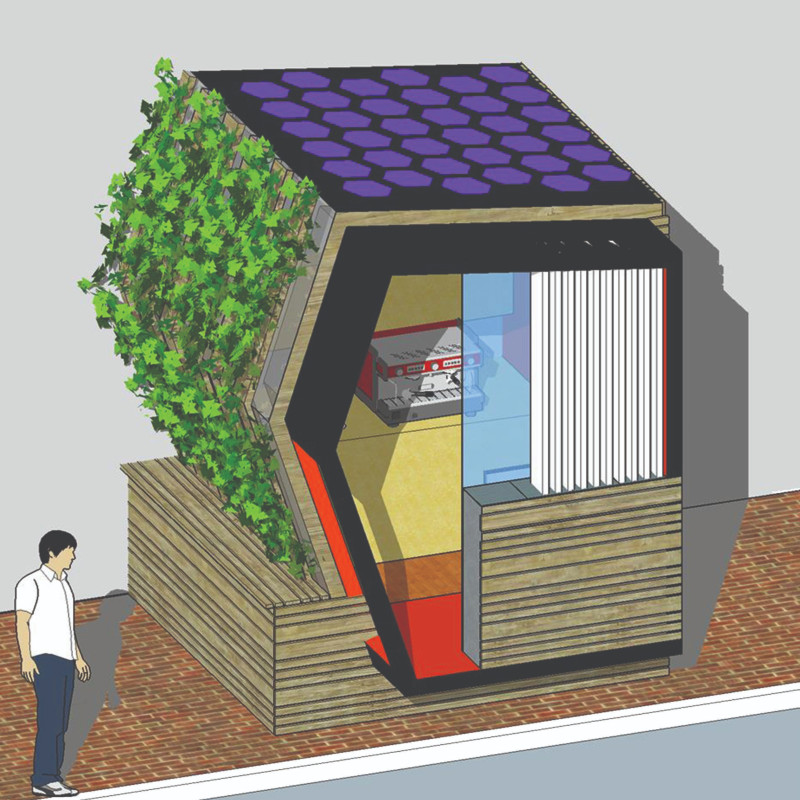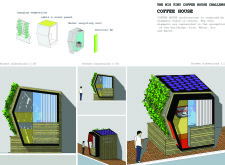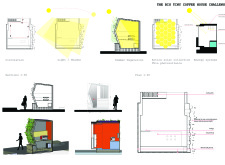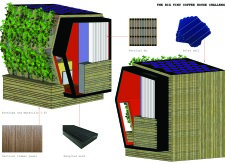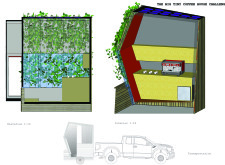5 key facts about this project
The Big Tiny Coffee House offers a practical response to sustainable living, connecting with its natural environment. Set in an inviting location, the coffee house serves as a community space where people can gather and enjoy refreshments. The design draws on the four basic elements—Fire, Water, Air, and Earth—each thoughtfully integrated into the structure to promote a sense of harmony.
Key Features
Several important features highlight the focus on sustainability. Hanging vegetation is included, enhancing the visual appeal while improving air quality and biodiversity. A small cabin element with solar panels is prominent, emphasizing a commitment to renewable energy and energy-efficient design.
Water Conservation
A water recycling unit is an important part of the design, showcasing responsible water management practices. This feature reinforces the goal of reducing waste and encourages users to consider their water use. The careful design encourages a holistic approach to ecological living, making sustainability a practical aspect of daily life.
Architectural Elements
The vertical fin serves a key role by providing passive solar shading, helping to manage light and heat inside the building. Seasonal or year-round greenery is thoughtfully positioned to block summer sunlight, ensuring comfort throughout the year. These elements are designed not only for efficiency but also to create an inviting atmosphere that connects the building with its surroundings.
Material Choices
The design prominently features vertical timber panels and recycled wood. These materials support the structure while reflecting a commitment to minimizing environmental impact. The natural textures and colors of the wood enhance the feelings of warmth and connection to nature, enriching the experience for visitors.
The elevations of the building highlight both public and private areas, promoting interaction among users while offering spaces for quiet moments. A notable detail is the transportable nature of the structure, allowing it to adapt to different locations easily. This flexibility enhances its usability and accommodates a variety of community needs.


